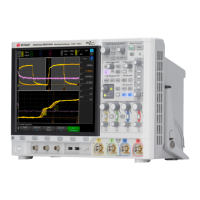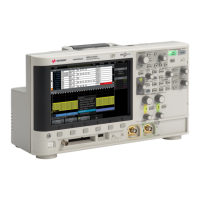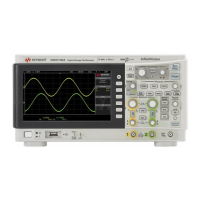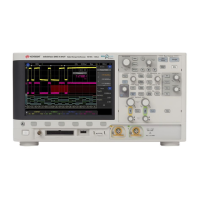64 6000 X-Series Oscilloscopes Service Guide
4 Troubleshooting
To perform hardware self test
Pressing [Utility] > Service > Hardware Self Test performs a series of internal
procedures to verify that the oscilloscope is operating properly.
It is recommended you run Hardware Self Test:
• After experiencing abnormal operation.
• For additional information to better describe an oscilloscope failure.
• To verify proper operation after the oscilloscope has been repaired.
Successfully passing Hardware Self Test does not guarantee 100% of the
oscilloscope's functionality. Hardware Self Test is designed to provide an 80%
confidence level that the oscilloscope is operating properly.
To perform front panel self test
Pressing [Utility] > Service > Front Panel Self Test lets you test the front panel keys
and knobs as well as the oscilloscope display.
Follow the on-screen instructions.
Failures in the front panel self test indicate problems with the keyboard, LEDs,
display, touchscreen, speaker, or microphone.
To verify default setup
The oscilloscope is designed to turn on with the setup from the last turn on or
previous setup.
To recall the default setup:
1 Press the [Default Setup] key.
This returns the oscilloscope to its default settings and places the oscilloscope
in a known operating condition. The major default settings are:
• Horizontal:
• main mode.
• 100 us/div scale.
• 0s delay.
• center time reference.
• Vertical:
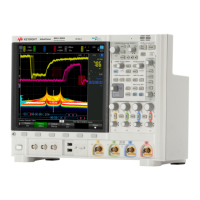
